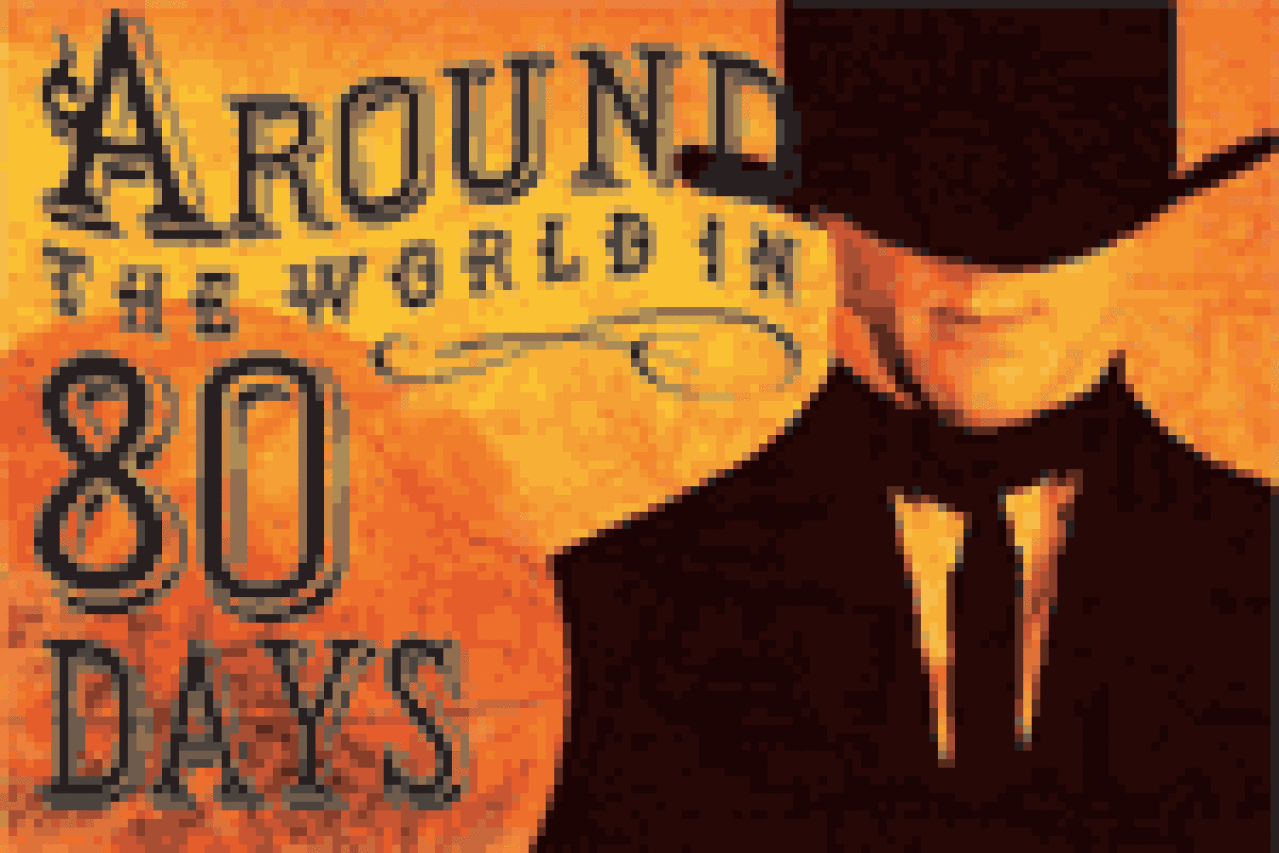Around the World in 80 Days

in Around the World in 80 Days
(© Sean Williams)
Since Jules Verne’s novel Around the World in 80 Days became an instant success in 1873, there have been dozens of stage and film adaptations, so the question is not whether it’s worth telling yet again, but why? That question isn’t fully answered by Lookingglass Theatre Company’s charming if unremarkable version of Around the World in 80 Days, adapted and directed by Laura Eason and featuring an eight-person cast.
As most everyone knows, Verne’s tale is about a staid Englishman, Phileas Fogg (Philip R. Smith, handling the role with ease), who bets a fortune that he and his valet, Passepartout (the athletic and compact Kevin Douglas), can circumnavigate the globe in 80 days. Eason oversimplifies the story, eliminating most of the secondary twists and characters, and greatly reduces Passepartout’s action-packed role. Much more crucially, Eason has completely eliminated Verne’s narrative voice, as well as descriptions of locale, dress, customs, sights or the mechanics of travel and technology in 1872 — the very innovations that make the story possible.
For example, Eason eliminates details of the suttee ritual — and its cultural context — which introduces the character of Mrs. Aouda (the elegant Ravi Batista). With little time and weight given to this crucial sequence, it can convey little about Fogg’s character or soul. As a whole, Eason’s storytelling is too efficient — and the journey, seen through Fogg’s fixed-focus eyes, lacks an emotional center until far too late.
The performance begins promisingly with Fogg’s unfailingly-precise daily routine condensed into a three-minute dumbshow repeated three times to establish his not-unkind but contained personality. Fogg virtually buries himself in a box (or coffin) each night by descending through a trap door into his bed chamber. Alas, such revealing character exposition doesn’t come again.
To be sure, there are plenty of other cleverly-staged sequences. A passage through India is conveyed with oversized puppet pieces and a swinging platform upon which the key players sway as if astride an elephant. Later, saucers slide across a gently tipping table, simulating a ship at sea, permitting Fogg and Aouda to touch hands accidentally as they reach to steady their teacups. Later still, the platform swing returns as the ice-sailing sledge that conveys Fogg across the wintry Nebraska prairie. Here, at long last, Fogg softens and smiles in wonder in the face of the wind and swirling snow. With the cast humming a wordless song against the plucked strings of Kevin O’Donnell’s varied and evocative musical score, it’s the high point of the show.
Jacqueline and Richard Penrod’s rectangular platform stage has an audience “L” on two sides, leaving two tall upstage walls which are richly paneled and which have a second-story walkway running along them. Two mural-like displays adorn the larger wall, divided by the walkway. Below is a mural of interlocking gears representing industrial London and Fogg’s clockwork life; above is a vast map of the world along which the journey is marked.
Mara Blumenfeld’s costumes recall my sister’s childhood doll set, with each doll in the colorful native costume of a different land. Against such sprightly costumes, Fogg, Passepartout, and the rest of the characters (including Inspector Fix, played deftly by Joe Dempsey) look downright bland. Indeed, bland is a word that too often applies to this whole production.











